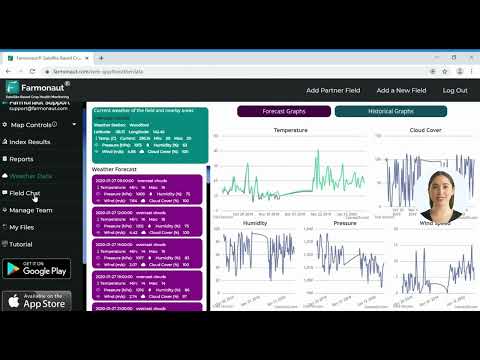Boosting Idaho’s Agricultural Exports: Digital Trade Strategies for Global Market Access
“Idaho’s agricultural exports were a key focus in a recent Senate Finance Committee hearing on U.S. trade policy.”
In the ever-evolving landscape of global trade, the United States continues to navigate complex challenges and opportunities, particularly in the realm of agricultural exports. A recent Senate Finance Committee hearing brought these issues to the forefront, highlighting the critical importance of enhancing global market access for American farmers and producers. As we delve into this topic, we’ll explore the intricate web of U.S. agricultural trade policy, with a special focus on Idaho’s vital role in the nation’s agricultural exports.
The Landscape of U.S. Agricultural Exports
The United States has long been a powerhouse in agricultural production and exports. Our nation’s farmers and ranchers are renowned for their efficiency, innovation, and high-quality products. However, in an increasingly competitive global marketplace, maintaining and expanding our market share requires strategic thinking and adaptive policies.
Idaho, with its rich agricultural heritage, stands at the forefront of this challenge. The state boasts over 24,000 farms and ranches, contributing significantly to the nation’s agricultural output. From world-famous potatoes to high-quality dairy products, Idaho’s agricultural sector is a cornerstone of both the state and national economy.

Digital Trade: A New Frontier for Agricultural Exports
In today’s digital age, the concept of trade has expanded beyond physical borders. Digital trade has emerged as a critical component of international commerce, offering new avenues for market access and growth. For the agricultural sector, this presents both opportunities and challenges.
Digital technologies are revolutionizing every aspect of agriculture, from production to distribution. Precision farming techniques, enabled by companies like Farmonaut, are enhancing productivity and sustainability. These advancements are not just improving yields; they’re also making U.S. agricultural products more competitive in the global market.
However, with these opportunities come new barriers. Digital trade barriers are increasingly becoming a concern for U.S. exporters. These can take various forms, including:
- Data localization requirements
- Restrictions on cross-border data flows
- Discriminatory regulations favoring domestic digital services
- Forced technology transfers
Addressing these barriers is crucial for ensuring that U.S. agricultural exports can fully leverage the benefits of digital technologies and maintain their competitive edge in the global marketplace.
Idaho’s Agricultural Exports: A Closer Look
To understand the impact of trade policies and digital strategies on Idaho’s agricultural sector, let’s examine some key data:
| Top Agricultural Exports from Idaho | Export Value (USD millions) | Key Export Destinations | Digital Trade Barriers Faced | Proposed Digital Strategies to Overcome Barriers |
|---|---|---|---|---|
| Potatoes | 850 | Japan, Canada, Mexico | Data localization requirements | Implement blockchain-based traceability systems |
| Dairy Products | 650 | China, South Korea, Southeast Asia | Restrictions on cross-border data flows | Develop cloud-based supply chain management solutions |
| Wheat | 450 | Japan, South Korea, Taiwan | Discriminatory digital regulations | Utilize AI-driven market analysis tools for targeted exports |
| Beef | 350 | Japan, South Korea, Canada | Forced technology transfers | Implement IoT solutions for livestock tracking and quality assurance |
| Barley | 200 | China, Japan, Taiwan | Limited digital infrastructure in target markets | Develop mobile-friendly platforms for trade facilitation |
This data underscores the diverse range of agricultural products Idaho exports and the complex landscape of digital trade barriers they face. By implementing innovative digital strategies, Idaho’s farmers and exporters can overcome these challenges and expand their global reach.
The Role of Technology in Boosting Agricultural Exports
As we navigate the complexities of global trade, technology emerges as a powerful ally for U.S. farmers and exporters. Innovative solutions like those offered by Farmonaut are transforming the agricultural landscape, providing tools that enhance productivity, sustainability, and market competitiveness.
Farmonaut’s satellite-based crop monitoring system, for instance, allows farmers to optimize their production practices, leading to higher yields and better quality crops. This technology not only benefits individual farmers but also strengthens the overall competitiveness of U.S. agricultural exports in the global market.
Moreover, the integration of blockchain technology in agricultural supply chains, as demonstrated by Farmonaut’s traceability solutions, addresses key concerns in international trade. By providing transparent and immutable records of a product’s journey from farm to consumer, these systems build trust and facilitate smoother trade processes.
Addressing Digital Trade Barriers
“The National Trade Estimate report addresses unfair trade practices affecting U.S. agriculture across global markets.”
The U.S. Trade Representative’s National Trade Estimate report plays a crucial role in identifying and addressing barriers to U.S. exports, including those in the digital realm. This comprehensive document serves as a roadmap for policymakers and negotiators, highlighting areas where action is needed to ensure fair competition for American products in global markets.
Key strategies for addressing digital trade barriers include:
- Advocating for data flow agreements: Negotiating agreements that allow for the free flow of data across borders while maintaining necessary privacy and security protections.
- Promoting digital trade provisions in trade agreements: Incorporating specific clauses in trade deals that address digital trade issues and prevent discriminatory practices.
- Engaging in multilateral forums: Participating in international discussions to shape global digital trade rules and standards.
- Supporting domestic digital infrastructure: Investing in robust digital infrastructure to ensure U.S. farmers and exporters can fully leverage digital technologies.
By focusing on these strategies, we can create a more favorable environment for U.S. agricultural exports in the digital age.
The Importance of Transparency in Trade Negotiations
One of the key themes that emerged from the recent Senate Finance Committee hearing was the importance of transparency in trade negotiations. As we work to expand market access for U.S. agricultural products, it’s crucial that our trade representatives maintain open lines of communication with Congress and stakeholders in the agricultural sector.
Transparency serves multiple purposes:
- It ensures that the interests of American farmers and ranchers are adequately represented in trade talks.
- It builds trust between policymakers, industry leaders, and the public.
- It allows for timely input from experts and affected parties, leading to more robust and effective trade agreements.
As we move forward in negotiating new trade deals and addressing digital trade barriers, maintaining this commitment to transparency will be essential for achieving outcomes that truly benefit U.S. agriculture.

Leveraging Technology for Market Intelligence
In the quest to boost agricultural exports, market intelligence plays a crucial role. Here, again, digital technologies offer powerful solutions. Advanced data analytics and artificial intelligence can provide valuable insights into global market trends, consumer preferences, and emerging opportunities.
Farmonaut’s AI-driven advisory system, for instance, can be adapted to provide not just agronomic advice but also market intelligence. By analyzing global crop production data, weather patterns, and trade flows, such systems can help farmers and exporters make informed decisions about what to produce and where to sell.
Furthermore, digital platforms can facilitate direct connections between U.S. producers and international buyers, reducing intermediaries and opening up new market opportunities. This is particularly valuable for small and medium-sized farms that might otherwise struggle to access global markets.
Enhancing Competitiveness Through Precision Agriculture
Precision agriculture technologies, such as those offered by Farmonaut, are not just tools for improving farm productivity; they’re also key to enhancing the competitiveness of U.S. agricultural exports. By optimizing resource use and improving crop quality, these technologies help American farmers produce high-quality products at competitive prices.
Key benefits of precision agriculture for export competitiveness include:
- Improved crop quality and consistency, meeting stringent international standards
- Reduced production costs, allowing for more competitive pricing
- Enhanced sustainability, aligning with global consumer preferences for environmentally friendly products
- Better traceability, facilitating compliance with international regulations
By adopting these technologies, Idaho’s farmers can strengthen their position in the global marketplace, ensuring the continued success of the state’s agricultural exports.
Addressing Challenges Faced by American Technology Companies
The success of U.S. agricultural exports in the digital age is closely tied to the ability of American technology companies to operate freely in international markets. However, these companies often face significant challenges abroad, including:
- Discriminatory regulations that favor domestic competitors
- Forced technology transfers as a condition of market access
- Restrictions on data storage and processing
- Intellectual property infringement
Addressing these challenges is crucial not only for the technology sector but also for the agricultural industry that increasingly relies on these digital tools and platforms. U.S. trade policy must prioritize creating a level playing field for American tech companies, which in turn will support the digital transformation of agriculture and enhance export capabilities.
The Role of Government in Supporting Digital Trade
While private sector innovation is driving much of the digital transformation in agriculture, government support remains crucial. Key areas where government action can make a difference include:
- Investment in rural broadband: Ensuring that farmers across Idaho and the nation have access to high-speed internet is essential for leveraging digital technologies.
- Support for research and development: Continued investment in agricultural and digital technologies can help maintain U.S. leadership in these fields.
- Trade facilitation: Streamlining customs procedures and implementing digital trade documentation can reduce barriers to agricultural exports.
- Digital skills training: Programs to enhance digital literacy among farmers and agricultural workers can accelerate the adoption of new technologies.
By taking action in these areas, the government can create an enabling environment for digital trade in agriculture, supporting the growth of exports from states like Idaho.
Looking to the Future: Emerging Trends in Agricultural Trade
As we look ahead, several emerging trends are likely to shape the future of agricultural trade and the role of digital technologies:
- Increased focus on sustainability: Global consumers are increasingly demanding sustainably produced food, creating opportunities for U.S. farmers who adopt environmentally friendly practices.
- Rise of vertical farming: Urban agriculture technologies could reshape global food supply chains, potentially impacting traditional agricultural exports.
- Personalized nutrition: Advances in biotechnology and data analytics could lead to more personalized food products, creating new niche export markets.
- Climate-resilient agriculture: As climate change impacts global food production, technologies that enhance resilience will become increasingly valuable.
Farmonaut’s technologies are well-positioned to support farmers in adapting to these trends, ensuring that U.S. agriculture remains competitive in evolving global markets.
Conclusion: A Digital-First Approach to Agricultural Exports
As we’ve explored throughout this discussion, the future of U.S. agricultural exports, particularly from states like Idaho, is inextricably linked to our ability to navigate the digital landscape. By embracing digital technologies, addressing digital trade barriers, and fostering innovation, we can ensure that American farmers and ranchers remain competitive in the global marketplace.
The recent Senate Finance Committee hearing highlighted the critical importance of these issues, setting the stage for continued focus on enhancing market access and addressing unfair trade practices. As we move forward, it’s clear that a collaborative approach involving government, industry, and technology providers like Farmonaut will be essential for success.
By leveraging the power of digital technologies and data-driven insights, we can not only boost agricultural exports but also build a more resilient, sustainable, and prosperous future for American agriculture. The path ahead may be challenging, but with the right strategies and tools, the opportunities for growth are boundless.
FAQ Section
Q: How can digital technologies help boost agricultural exports?
A: Digital technologies can enhance productivity, improve product quality, provide market intelligence, facilitate trade processes, and ensure traceability, all of which make U.S. agricultural products more competitive in global markets.
Q: What are some key digital trade barriers facing U.S. agricultural exports?
A: Key barriers include data localization requirements, restrictions on cross-border data flows, discriminatory regulations favoring domestic digital services, and forced technology transfers.
Q: How does Farmonaut contribute to enhancing agricultural exports?
A: Farmonaut provides satellite-based crop monitoring, AI-driven advisory systems, and blockchain-based traceability solutions that help farmers optimize production, improve quality, and meet international standards, thereby enhancing export competitiveness.
Q: What role does government play in supporting digital trade for agriculture?
A: Government can support digital trade by investing in rural broadband, funding research and development, streamlining trade procedures, negotiating favorable trade agreements, and providing digital skills training for farmers.
Q: How can farmers in Idaho leverage digital technologies to access global markets?
A: Idaho farmers can use digital platforms for market intelligence, implement precision agriculture technologies to improve productivity and quality, and utilize blockchain-based traceability systems to meet international standards and build trust with global buyers.
Earn With Farmonaut
Earn 20% recurring commission with Farmonaut’s affiliate program by sharing your promo code and helping farmers save 10%. Onboard 10 Elite farmers monthly to earn a minimum of $148,000 annually—start now and grow your income!
Farmonaut Subscriptions







